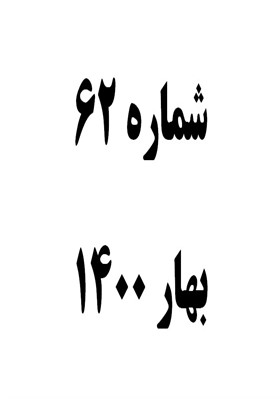رنگ و نقش مایههای پارچههای ایرانی در هفت قرن اول تمدن اسلامی
محورهای موضوعی : مباحث معرفتی و روش شناختی و تاریخ پژوهیافسانه حیدری 1 , امین مفتاحی 2 * , سیامک ناظمی 3
1 - طراحی لباس, دانشگاه آزاد اسلامی واحد تهران جنوب, تهران
2 - گروه
3 - طراحی لباس.دانشگاه آزاد اسلامی واحد تهران جنوب. تهران
کلید واژه: نقش, رنگ, تمدن اسلامی, منسوجات, پارچه های ایرانی,
چکیده مقاله :
نساجی از مهمترین هنر-صنعتهای راهبردی در میان فعالیتهای فرهنگی-اقتصادی اسلامی است. در طی دورانهای مختلف ترکیب زیبای هنر و صنعت سبب بافت و تولید منسوجات با کاربردهای مختلفی بوده و با ورود دین اسلام، تغییر و تحول فراوانی در شاخصههای منسوجات ایرانی اعم از رنگ و نقش مشاهده میشود و بر همین اساس منسوجات هفت قرن اول قمری از جایگاه ویژهای برخوردار هستند. منسوجات ایرانی این دوران، تحت تأثیر مذاهب، عقاید و شرایط سیاسی، اجتماعی و اقتصادی از خصوصیات و شاخصههایی بهره مند شدهاند که آنها را منحصر به فرد کرده است. بر همین اساس استخراج و بررسی این شاخصهها در حوزههای رنگ و نقش میتواند ظرفیت بالایی را برای شناخت بهتر و عمیقتر از منسوجات ایرانی- اسلامی برای توسعه صنعت پوشاک و نساجی کشور فراهم آورد. بدین منظور این تحقیق که با روش توصیفی- تحلیلی انجام شده است به بررسی و تحلیل رنگ و نقشمایههای پارچههای ایرانی از زمان ورود اسلام تا آخر قرن هفتم هجری قمری پرداخته تا مبانی نظری لازم از منظر عقاید اسلامی جهت طراحی و تولید منسوجات نوین ایرانی را فراهم نماید.
Textile is one of the most important strategic arts-industries among Islamic cultural economic activities. During different eras, the beautiful combination of art and industry has led to the weaving and production of textile of different application and with the advent of Islam, there has been a lot of evolution in the characteristics of Iranian textiles, including colors and motifs. Hence the textile of the first seven centuries AH have got a special position. Iranian textiles of these eras, under the influence of religion, beliefs and political, social and economic conditions, have benefited from the features and characteristics that made them unique. Accordingly, the extraction and study of these features in the fields of color and motif can provide a high capacity for a better and deeper knowledge of Iranian – Islamic textiles for the development on the country’s clothing and textile industry. For this purpose, this research which is carried out using descriptive – analytical method, studies and analyzes the colors and motifs of Iranian fabrics from the advent of Islam to the end of the seventh century AH to provide the necessary theoretical foundation in terms of Islamic beliefs, for designing and producing modern Iranian textiles.

